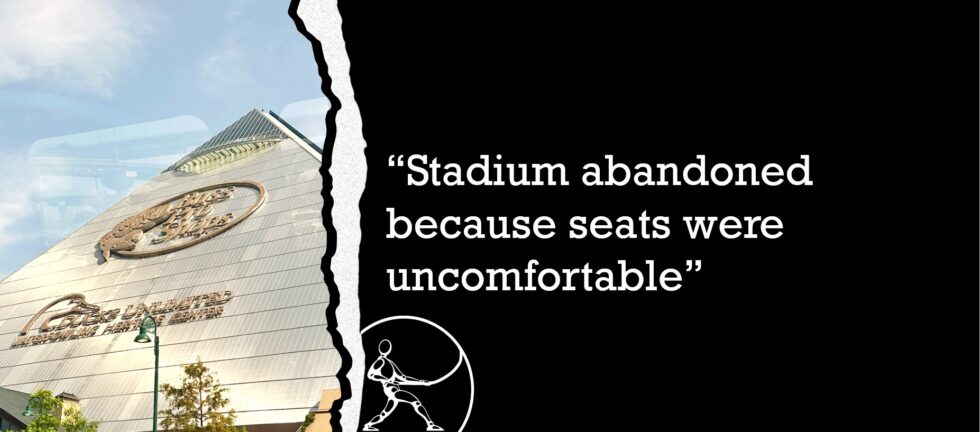Have you ever avoided purchasing event tickets because you didn’t think you could sit for 3 hours in the uncomfortable seats offered at the venue?
I confess, the headline for this article quotes the driver on our tour around Memphis, Tennessee a week ago. She was adamant that ergonomics (my interpretation of “uncomfortable seats”) was the reason the Memphis Pyramid was abandoned and left dormant for years. Fun fact for NBA basketball fans: the Pyramid was the initial venue for the Memphis Grizzlies, following the franchise’s relocation from Vancouver in 2001. In 2004, the team moved to a more comfortable venue closer to the soul of the city (a.k.a. Beale Street). The Pyramid was eventually gutted and reopened in 2015 as the corporately-titled “Bass Pro Shops at the Pyramid” which is now a prominent feature along the city’s waterfront.
I researched the matter of why the Grizzlies left the Pyramid, and learned that there were some other factors at play, but comfort and sightlines were mentioned in several sources.
Imagine the possibility, if stadiums offered “ergonomic” seating.
Would they sell more tickets? Admittedly, when the team is winning and the games are sold out, the stadiums benefit by squishing many seats into a small space. Enough people are willing to put up with some discomfort for the chance to see their hometown win that big game, or to watch that rock band perform. We hear a lot about sold-out shows and games, but I imagine that most events take place in stadiums with only a small fraction of seats filled. And I imagine that most stadiums are empty for more hours of the day than they are full. The potential to book more events and sell more tickets might just be worth the investment into ergonomics.
Follow the big screen
Movie theaters might be onto something. Recently, they started offering premium seating for higher prices. Our local Kitchener, Ontario theater offers “classic” or “premium” seating. The upgrade, which costs 30% more, offers “precise synchronized motion, individual intensity controls and ultra-comfortable seating”. The premium seats also offer the best line of sight to the screen – no craning the neck!
Wouldn’t it be interesting to learn whether concert and sporting event tickets could earn 30% more revenue for more comfortable seating? I’d love to get in on that cost-benefit analysis project!
Given a chance, we’d have plenty of ideas for stadium seat designers. (Our recommendations would be much more specific than the list below, but I’ve brainstormed some features that would be important.)
Which of these are most important to you?
- All seats should allow clear line of sight to the event.
- The cushions and backrests of the seats should be wide enough for the largest spectators’ bodies.
- Seats should offer back support. Ideally, the backrest should offer adjustable lumbar support, and the angle should be slightly reclined or adjustable.
- Cushioned armrests should be provided for each seat, and should be adjustable in height, width, and fore/aft position. Armrests should not be shared by adjacent seats.
- The seat and leg space should be large enough for the longest-legged spectators. But smaller spectators should be able to make adjustments, so that their legs are comfortable and their feet are supported. Cup holders or a table should be provided for each seat.
- Seats and backrests should be cushioned.
- Late-arriving spectators should be able to pass a seated person without physical contact.
- A railing should be provided to ensure safe passage on stairs.
- Stairs should not be excessively steep. Stair treads should be deep enough to avoid trips and falls.
- Step edges should be clearly marked, even under low-level lighting.
- Ramps, if needed, should be designed within guidelines for length, incline, and width.
- The design should be inclusive so that people with disabilities can easily access their seats and attend the event with their friends and families.
If you’re designing a stadium, or something smaller such as a customer service counter, cashier station, or dental chair, have you considered both your employees AND your customers? If you need some help, contact Carrie@TaylordErgo.com. We’d love to chat with you about your design, how we could help.


